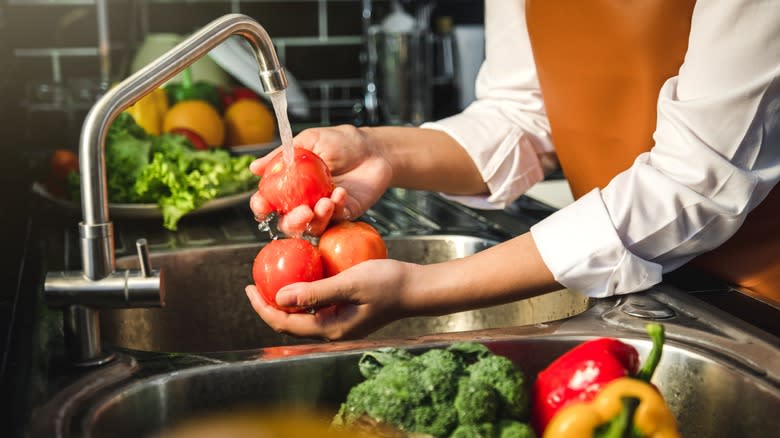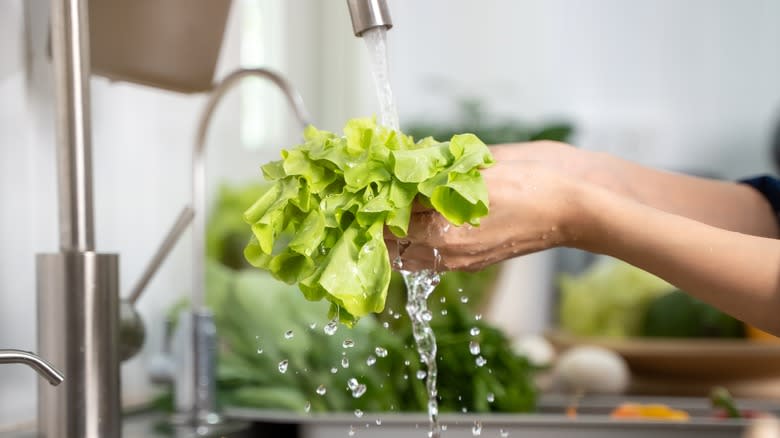The Ideal Temperature For Washing Fruits And Vegetables

Produce may house pesticides, insects, dirt, or germs from multiple handlers, so it's always a good idea to give them a good wash before consuming. Although washing fruits and vegetables seems fairly straightforward, there's more to it than meets the eye. In fact, you've probably heard of the many dos and don'ts for washing produce. For example, don't wash fruits and vegetables with soap (use baking soda instead), and don't wash produce in advance, to prevent spoilage. Aside from which cleaning ingredients to employ, if any, and the best time to clean berries and greens, the ideal water temperature is equally important.
If you've ever debated whether to turn the water on hot or cold when washing fruits and vegetables before settling for room temperature, you're off to a good start. Lukewarm and cool water are often the best choices but can vary depending on the type of produce.
Read more: Vinegar Cooking Hacks You'll Wish You Knew Sooner
When To Wash Produce With Cool Water

Though washing fruits and vegetables with cold water is a daunting task during wintertime, when your body is already craving warmth, this water temperature can benefit your produce. For one, vitamins B and C are water-soluble and don't do well in heat, so produce containing these vitamins may lose some nutrition when washed with hot water.
Warmer-temperature water can also break down fragile foods such as raspberries, so rinsing dainty produce with cool water at a low to moderate flow is recommended to keep the form. But, if you're soaking them in water for several minutes to half an hour, using either cool or lukewarm water will work. Cold water will hold the food's shape, and it can also keep fruits and veggies crisp. However, according to Colorado State University, water should at most only be 10 degrees Fahrenheit cooler than the fruit or vegetable.
When To Use Warm Water

So when exactly does lukewarm water come into play other than to soak delicate fruits? This temperature of water is also good for produce that have thicker, rougher skin, like root vegetables and melons. The sturdy exterior protects the interior from breaking down under warmer temperature. In fact, you can also use hot water to wash away the bacteria on unpeeled, fully sealed melons, especially the ones with netted skins, which allow microorganisms to stick onto them and can be spread if not washed before cutting.
Warm water, whether soaking or rinsing with it, effectively and easily removes lingering pesticides on fruits and vegetables. Just rinse it under running water for at least a minute. Whichever temperature of water you use, it's best to not stray too far from the temperature of the vegetable or fruit.
Read the original article on Tasting Table.


